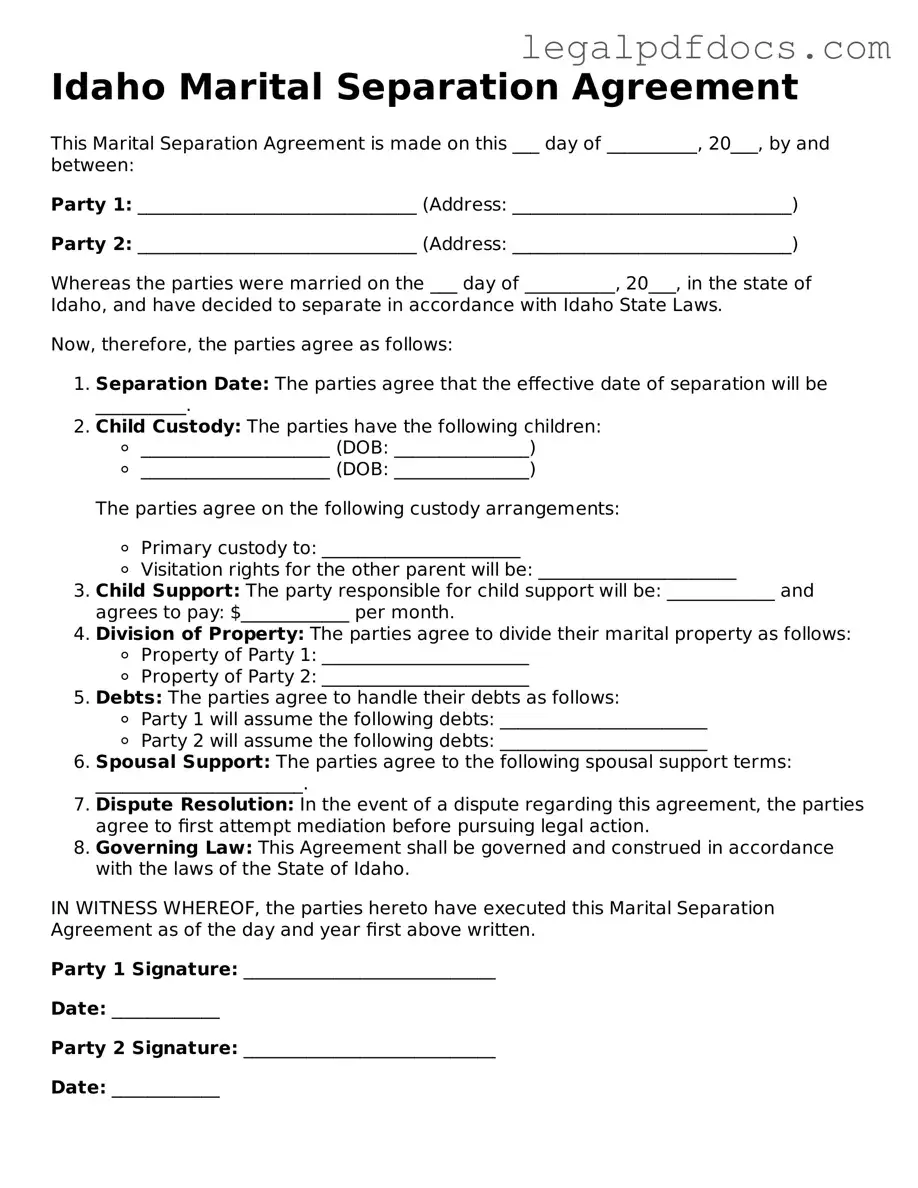Official Marital Separation Agreement Form for Idaho
The Idaho Marital Separation Agreement form is a legal document that outlines the terms and conditions agreed upon by spouses who wish to live separately while remaining legally married. This agreement addresses various aspects such as property division, financial responsibilities, and child custody arrangements. Understanding this form is crucial for individuals navigating the complexities of separation.
To begin the process, consider filling out the form by clicking the button below.
Open Marital Separation Agreement Editor Here
